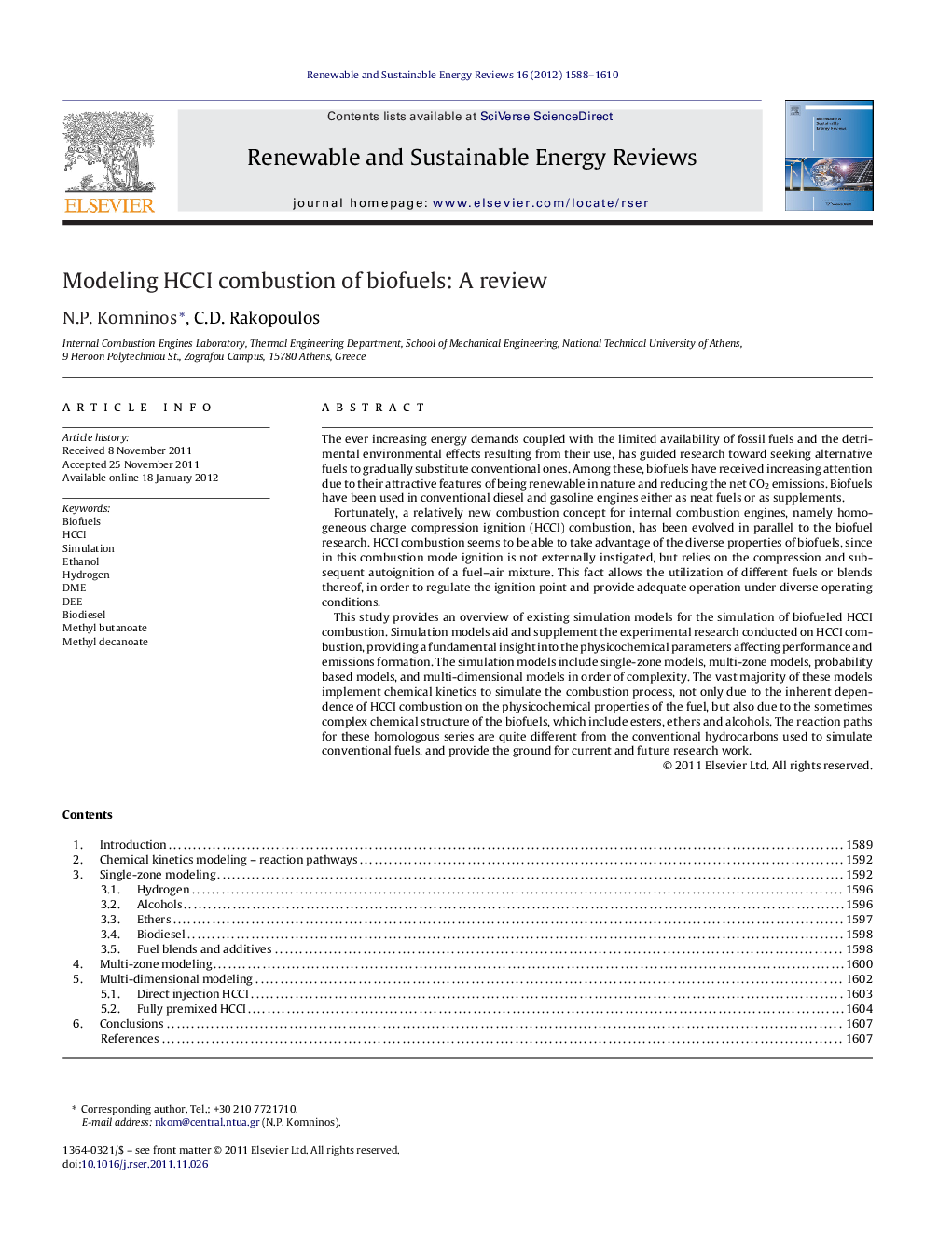| Article ID | Journal | Published Year | Pages | File Type |
|---|---|---|---|---|
| 1751095 | Renewable and Sustainable Energy Reviews | 2012 | 23 Pages |
The ever increasing energy demands coupled with the limited availability of fossil fuels and the detrimental environmental effects resulting from their use, has guided research toward seeking alternative fuels to gradually substitute conventional ones. Among these, biofuels have received increasing attention due to their attractive features of being renewable in nature and reducing the net CO2 emissions. Biofuels have been used in conventional diesel and gasoline engines either as neat fuels or as supplements.Fortunately, a relatively new combustion concept for internal combustion engines, namely homogeneous charge compression ignition (HCCI) combustion, has been evolved in parallel to the biofuel research. HCCI combustion seems to be able to take advantage of the diverse properties of biofuels, since in this combustion mode ignition is not externally instigated, but relies on the compression and subsequent autoignition of a fuel–air mixture. This fact allows the utilization of different fuels or blends thereof, in order to regulate the ignition point and provide adequate operation under diverse operating conditions.This study provides an overview of existing simulation models for the simulation of biofueled HCCI combustion. Simulation models aid and supplement the experimental research conducted on HCCI combustion, providing a fundamental insight into the physicochemical parameters affecting performance and emissions formation. The simulation models include single-zone models, multi-zone models, probability based models, and multi-dimensional models in order of complexity. The vast majority of these models implement chemical kinetics to simulate the combustion process, not only due to the inherent dependence of HCCI combustion on the physicochemical properties of the fuel, but also due to the sometimes complex chemical structure of the biofuels, which include esters, ethers and alcohols. The reaction paths for these homologous series are quite different from the conventional hydrocarbons used to simulate conventional fuels, and provide the ground for current and future research work.
